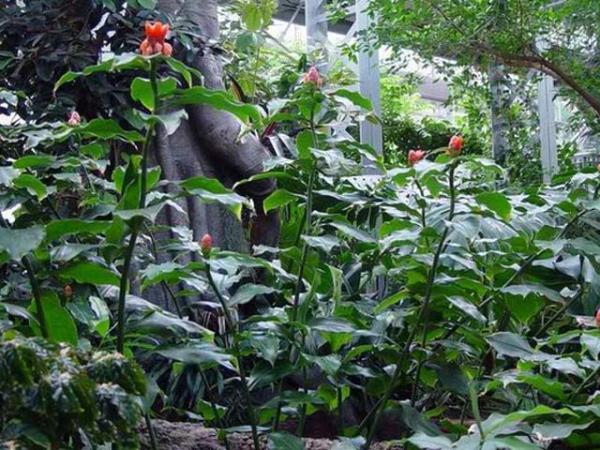Array
(
[0] => Array
(
[id] => 526
[is_published] => 1
[websiteID] => 5
[url] => /gardening/microclimates.php
[page_status] => Published
[number_of_ads] => 3
[can_use_editor] => 1
[last_modified_date] => 2013-09-16 00:00:00
[last_modified_by] => Alan
[checked_for_duplicate_content] =>
[title] => Microclimates in your garden
[heading] => Microclimates in your garden
[meta_description] => Did you know your whole garden may be a microclimate that allows you to grow plants that would not thrive on the other side of the street? Read this article to learn more.
[article_category_1] => Gardening
[article_category_2] =>
[article_category_3] =>
[article_category_4] =>
[article_category_5] =>
[business_category_1] => Landscaper
[business_category_2] => Nursery
[business_category_3] => Garden Designer
[business_category_4] => Landscape Architect
[business_category_5] =>
[number_of_google_mrecs] => 1
[show_google_ad_bottom_of_page] => 1
[show_get_quotes_top_of_page] => 1
[show_get_quotes_rhs_of_page] => 1
[show_directory_search_widget] => 1
[show_trending_content_widget] => 1
[show_facebook_widget] => 1
[show_further_reading_section] => 1
[show_sponsors_section] => 0
[show_top_article_ad] => 1
)
[1] => Array
(
[id] => 524
[is_published] => 1
[websiteID] => 5
[url] => /gardening/how-to-plant.php
[page_status] => Published
[number_of_ads] => 3
[can_use_editor] => 1
[last_modified_date] => 2013-09-16 00:00:00
[last_modified_by] => Alan
[checked_for_duplicate_content] =>
[title] => How to plant
[heading] => How to plant
[meta_description] => Learn how to plant correctly. Planting correctly will not only get your garden off to a flying start, but it will also ensure that your plants's root systems develop as healthily as possible, maximising their long-term stability.
[article_category_1] => Gardening
[article_category_2] =>
[article_category_3] =>
[article_category_4] =>
[article_category_5] =>
[business_category_1] => Landscaper
[business_category_2] => Nursery
[business_category_3] => Garden Designer
[business_category_4] => Landscape Architect
[business_category_5] =>
[number_of_google_mrecs] =>
[show_google_ad_bottom_of_page] =>
[show_get_quotes_top_of_page] =>
[show_get_quotes_rhs_of_page] =>
[show_directory_search_widget] =>
[show_trending_content_widget] =>
[show_facebook_widget] =>
[show_further_reading_section] => 1
[show_sponsors_section] => 0
[show_top_article_ad] => 1
)
[2] => Array
(
[id] => 209
[is_published] => 1
[websiteID] => 5
[url] => /gardening/top-gum-trees-for-gardens.php
[page_status] => Published
[number_of_ads] => 4
[can_use_editor] => 1
[last_modified_date] => 2013-09-16 00:00:00
[last_modified_by] => Alan
[checked_for_duplicate_content] =>
[title] => Angus's Top Gum Trees for Gardens
[heading] => Angus's Top Gum Trees for Gardens
[meta_description] => Angus Stewart's list of the best gum trees (Eucalyptus, Corymbia and Angophora) for Australian gardens.
[article_category_1] => Gardening
[article_category_2] =>
[article_category_3] =>
[article_category_4] =>
[article_category_5] =>
[business_category_1] => Landscaper
[business_category_2] => Nursery
[business_category_3] => Garden Designer
[business_category_4] => Landscape Architect
[business_category_5] =>
[number_of_google_mrecs] =>
[show_google_ad_bottom_of_page] =>
[show_get_quotes_top_of_page] =>
[show_get_quotes_rhs_of_page] =>
[show_directory_search_widget] =>
[show_trending_content_widget] =>
[show_facebook_widget] =>
[show_further_reading_section] => 1
[show_sponsors_section] => 0
[show_top_article_ad] => 1
)
[3] => Array
(
[id] => 210
[is_published] => 1
[websiteID] => 5
[url] => /gardening/top-ten-native-plants.php
[page_status] => Published
[number_of_ads] => 5
[can_use_editor] => 1
[last_modified_date] => 2013-09-16 00:00:00
[last_modified_by] => Alan
[checked_for_duplicate_content] =>
[title] => top ten native plants
[heading] => Top ten native plants
[meta_description] => Native plant specialist Angus Stewart's top ten native Australian plants
[article_category_1] => Gardening
[article_category_2] =>
[article_category_3] =>
[article_category_4] =>
[article_category_5] =>
[business_category_1] => Landscaper
[business_category_2] => Nursery
[business_category_3] => Garden Designer
[business_category_4] => Landscape Architect
[business_category_5] =>
[number_of_google_mrecs] =>
[show_google_ad_bottom_of_page] =>
[show_get_quotes_top_of_page] =>
[show_get_quotes_rhs_of_page] =>
[show_directory_search_widget] =>
[show_trending_content_widget] =>
[show_facebook_widget] =>
[show_further_reading_section] => 1
[show_sponsors_section] => 0
[show_top_article_ad] => 1
)
)
Helpful articles
Microclimates in your garden. Did you know your whole garden may be a microclimate that allows you to grow plants that would not thrive on the other side of the street? Read this article to learn more.
How to plant. Learn how to plant correctly. Planting correctly will not only get your garden off to a flying start, but it will also ensure that your plants's root systems develop as healthily as possible, maximising their long-term stability.
Angus's Top Gum Trees for Gardens. Angus Stewart's list of the best gum trees (Eucalyptus, Corymbia and Angophora) for Australian gardens.
Top ten native plants. Native plant specialist Angus Stewart's top ten native Australian plants.
Plant description
Alpinia spicata, or Indian Head Ginger, is a herbaceous tropical perennial plant that grows from rhizomes. It is one of the easiest of the ornamental gingers to grow. It has tropical looking foliage with leaves that spiral around the main stem. It also has bright red cone shaped bracts, with orange and yellow flowers that emerge one at a time. The flower bract is long lasting and makes an excellent cut flower. It will flower in spring and summer, or year round in tropical conditions. The plant does best in tropical to sub tropical zones, but can also be grown in colder areas that experience frost. It may die down in colder months, but will reshoot again when warmer weather comes. It is a vigorous grower that can quickly make a large clump. It can be grown as a container plant, in large containers.
Alpinia like a well drained fertile soil. They like a part shaded position, regular fertilising and watering. They can take a sunnier position if kept well watered. They have few pests and diseases.
Propagation is from division of the clump, or by stem cuttings.
Alpinia spicata is also known as Costus scaber and Costus spicatus.
Additional plant information
Flowers
Flower colour: red and orange and yellow
Flowering season: spring summer autumn winter
Plant size
Maximum height: 2.5 metres
Minimum height: 2 metres
Maximum width: 3 metres
Minimum width: not specified
Sunlight, frost & salt tolerance
This plant will tolerate full or partial sunlight.
Medium frost tolerance.
Plant is salt tolerant.
Fauna attracting?
Yes. Attracts: Insects, bees, birds.
Climate
This plant species will grow in the following climates: temperate, subtropical, tropical.
Soil types & conditions
Loam: moist, well-drained.
Clay: moist, well-drained.
Sand: moist.
Soil pH: 6.0-6.5
Pests
Red spider mite
Miscellaneous information
Planting season: All.
Types of fertiliser: Good general purpose fertiliser.
Find a nursery
Search for another plant

